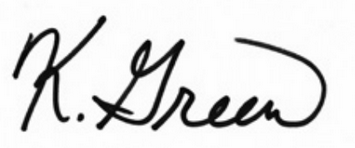It’s earnings season, and I clicked through lots of earnings calls, press releases, and media reports last week. I kept seeing articles with investing tips that are actually traps to avoid.
I had to click on them to hear what others think the biggest investing “sins” are. I am genuinely curious about different investing principles even if I don’t agree.
It was a good reminder that we all participate in the same market but in different ways. We have different goals, risk tolerance, and time to commit to our strategy.
That got me thinking about my top 3 traps that income investors must avoid. So, here they are.
Gold Briefing: Central Banks Are Rebalancing
Global central banks are holding more gold than U.S. Treasuries for the first time in decades — a shift that suggests growing concern about debt, currency debasement, and a changing monetary order. Our Gold Market Briefing examines what’s driving this move and what it could mean for investors. |
1. Don’t Settle for Crappy Yields
I have one general rule: you deserve 3.5%. That’s an above-average yield when compared to the 1.1% you’ll get from the S&P 500. I always search for opportunities for us to collect even higher yields.
When you buy shares of a company, you’re buying a piece of its business. You have committed to take the journey with the management team… and you deserve to get paid for that commitment.
There are lots of options competing for your money. A dividend is a way to reward shareholders for sticking around. If an investment carries higher risk, you should expect a higher yield.
Every stock I recommend to my Yield Shark readers includes a buy-up-to price. This is the maximum you should pay for shares. I calculate this price based on the dividend yield that I think we deserve and my analysis of the company.
2. Don’t Chase the Markets
When markets are running higher it sparks FOMO (fear of missing out) in investors. More people pile into the market which sends stocks even higher. It’s a vicious cycle.
This feels good until we realize that earnings can’t possibly support the sky-high valuations. The process then goes into reverse, creating a snowball of selloffs.
Getting caught up in this emotional seesaw is a surefire way to buy high and sell low—and lose a lot of money. It’s even worse for dividend investors because it hurts us twice. We overpay and get stuck with a lower yield.
The goal is to earn a great yield, but yield is inversely related to price. The higher the stock price, the lower the yield.
If you liked a pair of jeans at $100, you’d be thrilled to buy the same pair at $80. It’s the same with stocks. Unless something has changed with the company, a lower stock price is a great opportunity to add to your position, not panic sell.
3. Don’t Put MLPs in a Tax-Advantaged Account
One of my favorite stocks over the last 14 years has been Enterprise Products Partners (EPD). It’s an oil and gas pipeline giant that gets paid to transport oil regardless of the oil price. It pays out an above-average yield because it’s structured as a MLP (master limited partnership).
Investors either love or hate MLPs. They pass through most of their income to unitholders, which allows them to avoid corporate-level taxation. The result is high yields that income investors love.
However, at tax time, the company will issue a K-1 instead of a 1099. It usually comes out later than most other tax documents and can complicate your filing.
The real issue comes when these investments are held in tax-advantaged accounts like a 401(k) or traditional IRA. Since the income is generated by a partnership, it will be considered Unrelated Business Taxable Income (UBTI) in these types of accounts.
Once UBTI hits $1,000, the income will be taxable right away and require additional forms. Not much to love about that.
If you want pipeline exposure in tax-advantaged accounts use an ETF. The Global X MLP & Energy Infrastructure ETF (MLPX) is a good place to start.
I’ve learned many other investing lessons over the years. I think these three are the most universal for income investors.
Did I miss something? What would you add to my dividend investing warnings list? Comment below the article or shoot me a message through our customer service team.
For more income, now and in the future,
Kelly Green






